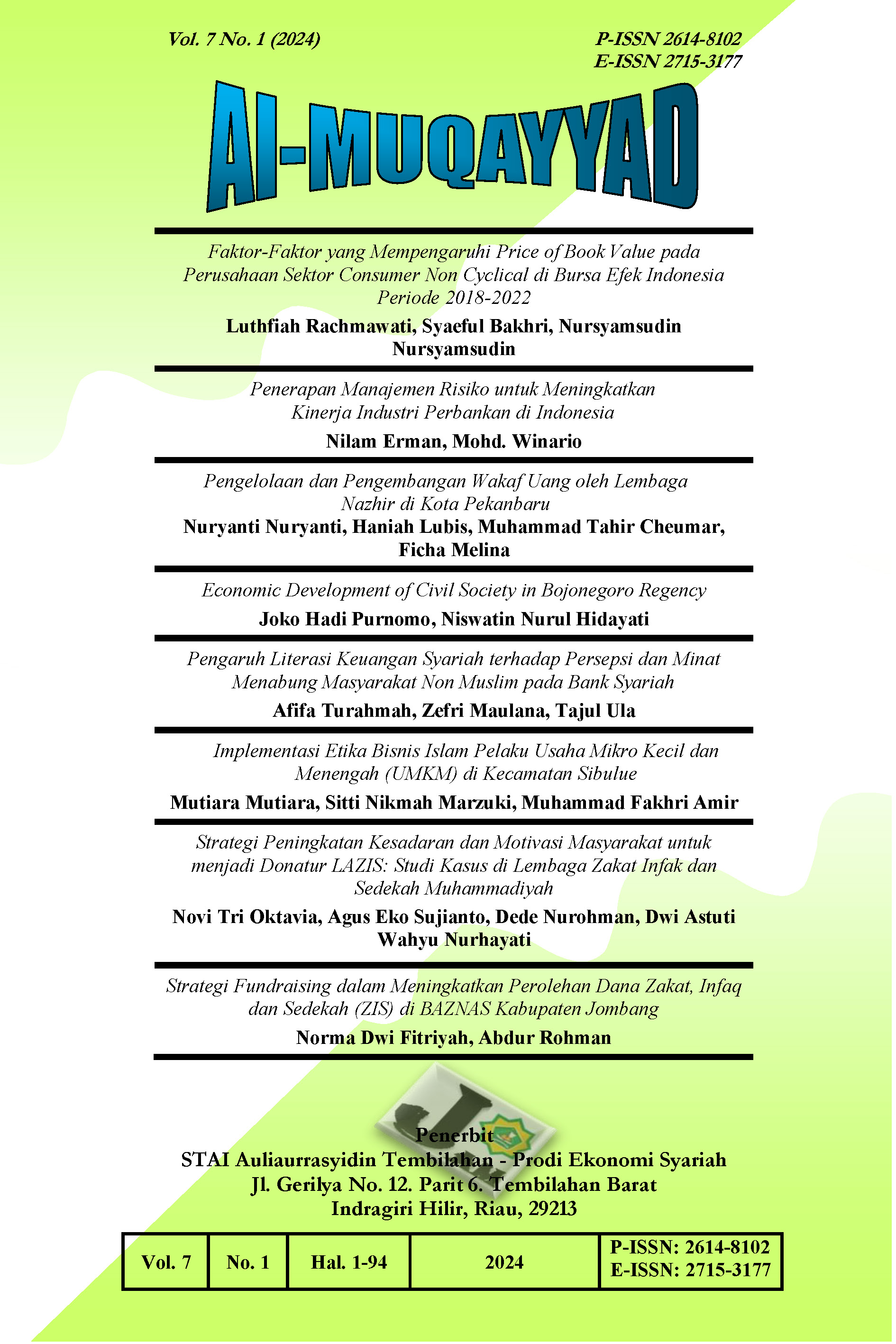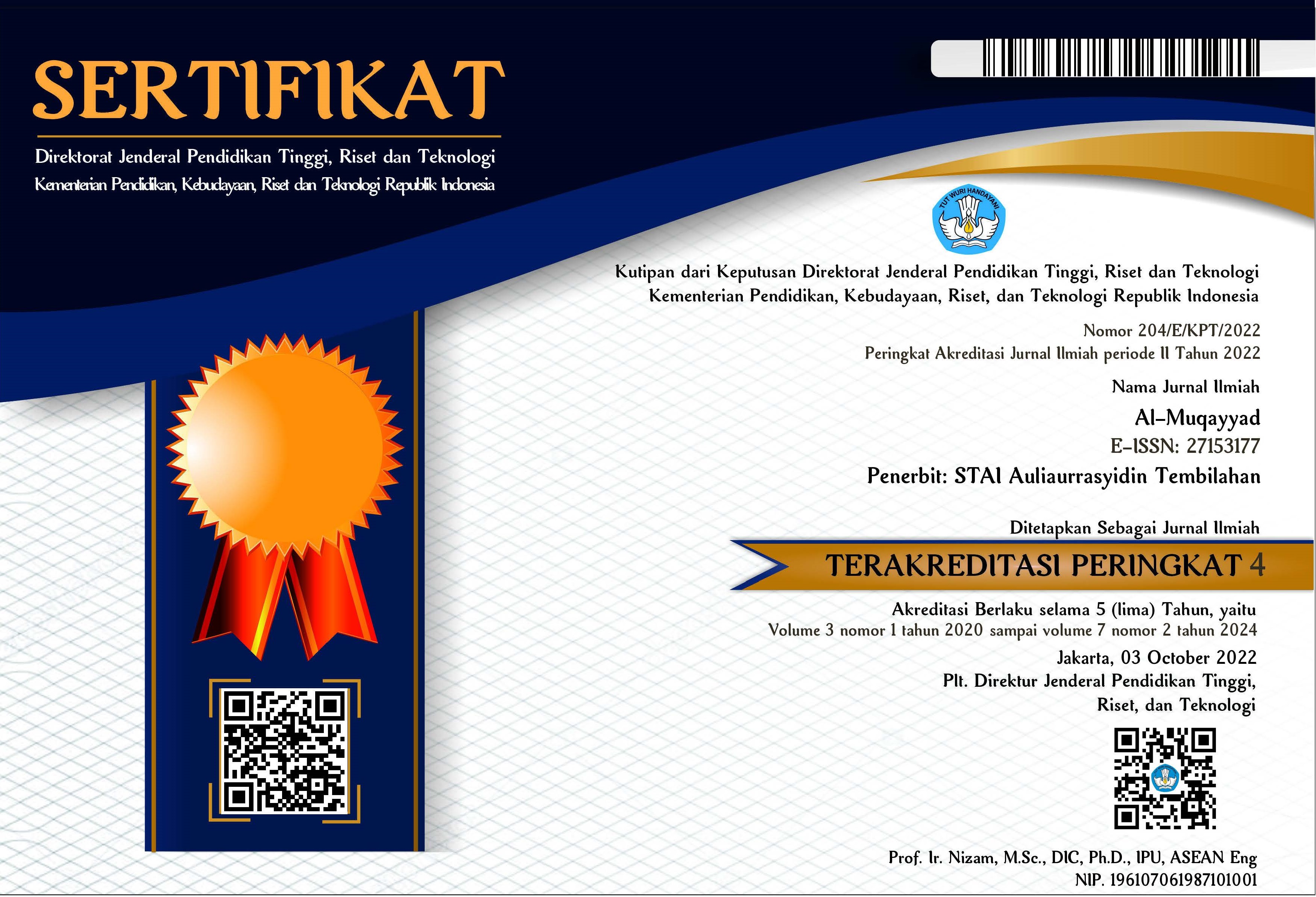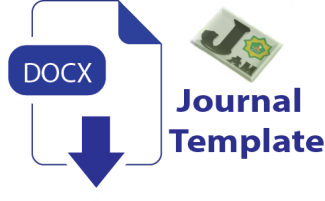Pengelolaan dan Pengembangan Wakaf Uang oleh Lembaga Nazhir di Kota Pekanbaru
DOI:
https://doi.org/10.46963/jam.v7i1.1881Keywords:
Management, Development, Cash Waqf, NazhirAbstract
The existing cash waqf assets are not yet fully managed by nazhir, because in the Pekanbaru City area there are still limited nazhir resources to manage waqf, both in terms of quality and quantity. This research seeks to explain the management of cash waqf assets and how to develop waqf management by cash waqf nazhir institutions in Pekanbaru City so that the potential of cash waqf can be explored. The research carried out was descriptive qualitative field research. Data was obtained by interviewing informants, namely 6 nazhir cash waqf institutions in Pekanbaru City. Data is presented descriptively based on conditions that occur in the field. The management of cash waqf that has been carried out by nazhir cash waqf institutions in Pekanbaru City has not shown maximum results considering the huge potential. However, the efforts made by these institutions show their seriousness in managing cash waqf. Various programs have been prepared to develop the management of cash waqf in order to increase the benefits of waqf that can be distributed to mauquf 'alaih.The main contribution of this research is to focus on managerial techniques in managing cash waqf in Pekanbaru City.
Downloads
References
Abdul Rasyid Soeharto. (2021). Good nazhir Governance. Sekolah Profesional Nazhir Wakaf MES Pekanbaru, 2021.
Abdul Rasyid Soeharto. (2022). Interview with Yayasan Wakaf Islam Al Fikri Riau.
Ali, R. F., & Zulkifli. (2019). Persepsi Nadzir di Kecamatan Sukajadi Kota Pekanbaru Terhadap Wakaf Produktif. Jurnal Tabarru’, 2(2), 16–27.
Budi Suhari. (2022). Interview with Yayasan Rotte Indonesia Mulya (YRIM).
Devi Megawati. (2014). Pengelolaan Dan Pengembangan Wakaf Produktif Di Kota Pekanbaru. Hukum Islam, XIV(1), 104–124.
Fitri, R., & Wilantoro, H. P. (2018). Analisis Prioritas Solusi Permasalahan Pengelolaan Wakaf Produktif (Studi Kasus Kabupaten Banjarnegara). Al-Muzara’ah, 6(1), 41–59. https://doi.org/10.29244/jam.6.1.41-59
Haryati. (2022). Interview with Badan Wakaf Indonesia Kota Pekanbaru.
Kemenag. (2021). Sistem Informasi Wakaf.
Lubis, H., Rustam, T., Nuryanti, & Kafnaeni, D. S. (2023). Faktor-faktor yang mempengaruhi optimalisasi pengelolaan wakaf produktif pada badan wakaf Indonesia di Provinsi Riau. AT-TAWASSUTH:Jurnal Ekonomi Islam, VIII(I), 157–173.
Soeharto, A. rasyid. (2022). Interview with Badan Wakaf Indonesia Propinsi Riau.
Sugiyono. (2017). Metode Penelitian Kuantitatif, Kualitatif, dan R&D. CV. Alfabeta.
Syakur, A., Yuswadi, H., Sunarko, B. S., & Wahyudi, E. (2018). Tata Kelola Wakaf dalam Meningkatkan Kesejahteraan Masyarakat di Kabupaten Jember. AL-IHKAM: Jurnal Hukum & Pranata Sosial, 13(1), 73–96. https://doi.org/10.19105/al-ihkam.v13i1.1187
Yon Hendri. (2022). Interview With Badan Wakaf Al Fityah.
Yukasrinal. (2022). Interview with Yayasan Firyal Indonesia.
Yusuf, A. M. (2014). Metode Penelitian Kuantitatif, Kualitatif, dan Penelitian Gabungan. Prenadamedia Group.
Downloads
Published
Issue
Section
License
Copyright (c) 2024 Nuryanti Nuryanti, Haniah Lubis, Muhammad Tahir Cheumar, Ficha Melina

This work is licensed under a Creative Commons Attribution-ShareAlike 4.0 International License.
Authors who publish with this journal agree to the following terms:
1. Copyright on any article is retained by the author(s).
2. The author grants the journal, right of first publication with the work simultaneously licensed under a Creative Commons Attribution shareAlike 4.0 International License that allows others to share the work with an acknowledgment of the work’s authorship and initial publication in this journal.
3. Authors are able to enter into separate, additional contractual arrangements for the non-exclusive distribution of the journal’s published version of the work (e.g., post it to an institutional repository or publish it in a book), with an acknowledgment of its initial publication in this journal.
4. Authors are permitted and encouraged to post their work online (e.g., in institutional repositories or on their website) prior to and during the submission process, as it can lead to productive exchanges, as well as earlier and greater citation of published work.
5. The article and any associated published material is distributed under the Creative Commons Attribution-ShareAlike 4.0 International License





2.png)



